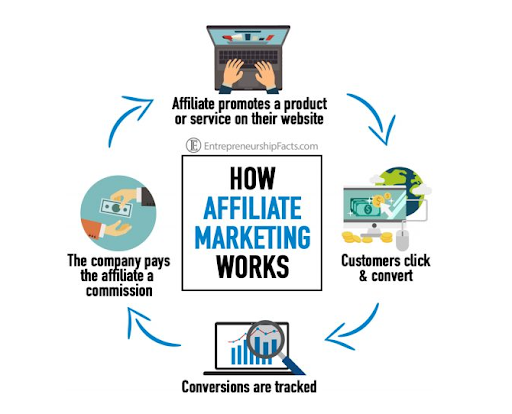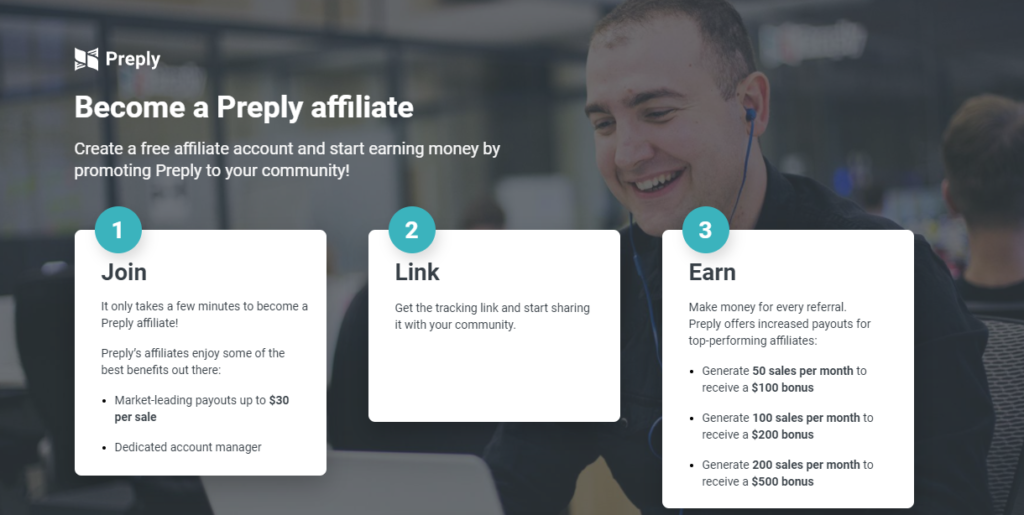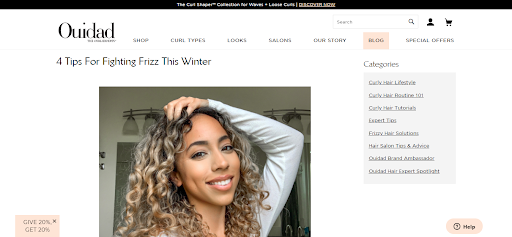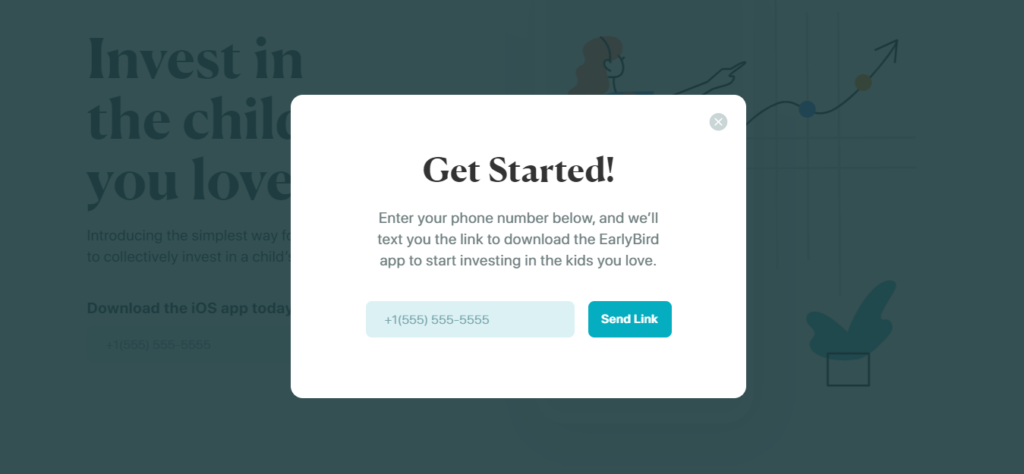How to Start an Affiliate Marketing Program to Multiply Profits

This post is also available in:
![]()
![]()
![]()
![]()
Affiliate marketing is estimated to be worth almost 13 billion dollars, and it only takes a few superstar affiliates to drive loads of new sales.
Stick around to learn everything you need to know about affiliate programs (plus a quick note about wholesale programs).
In this post, we’ll cover:
- What’s an affiliate marketing program?
- Why should I create an affiliate marketing program?
- 6 tips to grow your affiliate marketing program
- Affiliate programs not right for you? Try wholesale instead.
A ton of value is heading your way.
Let’s begin.
What’s an Affiliate Marketing Program?
Affiliate marketing is a business model involving a group of people (called ‘affiliates’) who promote your products and services online in exchange for a commission.
Affiliates have special links that companies track to see which products/services were sold, how many were sold, and the total revenue an affiliate has generated so far. Affiliate marketing for small businesses is particularly effective, as it enables them to expand their reach and drive sales without significant upfront investment.
Anyone with an online community can be a potential affiliate — bloggers, mompreneurs, public figures, influencers, vloggers, social media stars, etc.

What Are Some Examples of Affiliate Marketing Approaches?
Here are some examples of affiliate marketing approaches:
Examples of Traditional Approaches
- Writing reviews about product features, uses, and case studies
- Using affiliate banners on blogs, websites, landing pages, etc.
- Embedding affiliate links into targeted keywords
- Sending newsletters
- Adding affiliate links in email signatures
- Monetizing a blog with affiliate links
Examples of Modern Approaches
- Promoting niche products/services (i.e. CBD oil)
- Using products/services
- Talking about the pros/cons of using products/services
- Sharing who would love the product/service most (i.e. single moms)
- Demonstrating how to use products/services (i.e. how-tos)
- Teaching something about the product/service (i.e. wellness benefits)
Note: Without a significant amount of traffic, traditional approaches typically don’t work as well as modern approaches.
Is affiliate marketing the same as influencer marketing?
Affiliate marketing is a business model while influencer marketing is a marketing strategy.
Using influencers as affiliates is a fantastic idea, but it’s important to note that affiliate marketing is not influencer marketing.
How do I pay affiliates?
Imagine how much money you’d traditionally have to pay a sales associate to generate 200 sales per month.
Instead, you can pay affiliates by using a tiered payment structure like Preply does.
Here’s how theirs works:
- 50 sales per month = $100 commission
- 100 sales per month = $200 commission
- 200 sales per month = $500 commission

You can also offer rewards and free gifts as a bonus. Since superstar affiliates love the products and services they’re promoting, they’ll appreciate the freebies.
Why Should I Create an Affiliate Marketing Program?
Here’s why:
1. They’re inexpensive to set up
Affiliate marketing programs have the potential to generate high profit margins, all while reducing customer acquisition costs (CAC). In other words, they’re excellent for online retailers.
‘Ambassador,’ ‘Referral SaaSquatch,’ and ‘Offers Look’ are all examples of cost-effective tools that centralize the work for you. They handle affiliate registration, automatic payments, message boards, affiliate link generation, etc. If you are still struggling but want to start your own affiliate program while being unemployed, you might look into different ways to get loans for unemployed people.
2. There’s no need to hire a salaried sales team
Maintaining a sales team can get expensive — and if they don’t end up selling much of anything, you’ve got a big problem.
With affiliate marketing, you only pay if affiliates make a sale.
Worst case scenario, if they don’t sell anything, you don’t have to pay them.
3. It’ll benefit your link-building strategy
When affiliates share their tracking URLs on their website, social channels, and video descriptions, you’ll build more backlinks (every SEO strategy’s dream).
You’ll get higher rankings, which leads to more customers. Your affiliates will generate commissions as well — it’s a win-win scenario.
Think of all those beautiful backlinks you could get!
PS: Using influencers with strong websites can boost your SEO even more (and may even give you the chance to hit the top spot for competitive keywords).
4. Consumers trust influencers
Using highly influential people with an engaged audience builds trust with consumers.
Why? Because they know the game.
They post valuable content consistently that their audience can’t get enough of. In return, their audience trusts them.
Even though you may need to pay influencers higher commissions, there’s no need to hire celebrities or major influencers. Micro-influencers and Nano influencers are great because they appeal to a niche audience and don’t charge outrageous prices per post.
5. You’re in control
Grow at a rate you’re comfortable with by customizing your affiliate program to fit your needs and fulfillment requirements.
You decide:
- Which affiliates to work with and how much commission to offer
- The graphics, look, and feel that you want affiliates to use
- The maximum amount an affiliate can sell
Since you’re in the driver’s seat, you don’t have to worry about growing too fast and not being able to fulfill orders.
6. You can make money while you sleep
Imagine waking up in the morning and seeing that you just sold a thousand products overnight.
Having affiliates means not having to devote your own time to sell your products and services because other people are selling them for you.
Who doesn’t want to make money while they sleep?
Tips To Grow Your Affiliate Marketing Program
Here are our top tips:
Start an Affiliate Program in a Growing Niche
Affiliate programs exist in all industries from education to retail products, like this one comparing the best free colleges.

And this one promoting hair products:

But, starting an affiliate program in a growing niche, like podcasts, is a good way to go because it means less competition. With over 90,000 active podcasts, Buzzsprout continues to grow in part due to their easy to join affiliate program.
Here are some other examples of growing niches.
Examples of growing service-based niches:
- Online coaching
- Video content distribution
- Web Hosting
- Email marketing
- Social media tools
- Cloud-based software
- Ecommerce kits
Examples of growing product-based niches:
- CBD oil
- Men’s beauty products (beard oil is surprisingly a popular one)
- Books on race and politics
- Eco-friendly products
- Essential oils
- Indoor fitness equipment
- Loungewear
In addition to having less competition, niche marketing may also contribute to a higher ROI, more customer loyalty, and understanding your customers in a whole new way.
Use lead magnets to find affiliates
If you have a small business, you can’t skip out on lead magnets.
Using lead magnets is a great way to capture potential affiliates’ information so you can send them a personalized email or text to check in about joining your program. Personalized cold email can be an effective tactic to reach out to these potential affiliates, allowing you to craft outreach that speaks directly to each prospect’s interests and pain points.
Here’s an example from EarlyBird:

Earlybird has three lead magnets on their site to collect phone numbers (two at the top of their site and one at the bottom).
When you click on the one at the top right, it shows the popup in the photo above, while the other ones are directly on the page.
You may need to rotate your lead magnets and try out a few popups to see which positions and methods are the most effective.
You can also try using a popup when a visitor arrives at your site, and when a visitor is trying to leave your site.
Use videos for clarification
Videos explain systems, processes, and questions like nothing else does.
Here are some examples of videos you can use:
1. Demonstrate your products or services
Demonstrate your product or service full on or break it up into a series of videos. You can also choose to highlight your favorite features and demonstrate how they work.
If possible, try to feature an existing affiliate, a new affiliate, or an influencer to demonstrate how the product or service works. At the end of the video, have them explain your affiliate program.
2. Answer important questions
Answering questions is a great way to alleviate potential pain points.
Here are some common questions affiliates have:
- Will my audience like, need, want, or use the product/service? Why?
- What are commissions like? Do you offer bonuses?
- What’s the company’s growth plan?
- Do you provide product or service samples?
- Are there any upcoming promotions?
- Do you provide custom coupons?
Affiliates want to know what they’re getting into, why they should promote your product or service, how commissions work, and how it can bring purpose and meaning to their life.
You can also send out a questionnaire or host a live video on Instagram, Facebook, and/or YouTube before making your video so you can make sure to cover every question.
3. Share your company’s story
Draw on emotion by telling a compelling story about your company — affiliates want to know that they’re part of something special, important, and useful.
They care about who you are, why you’re around, how you came to be, and where you’re going.
Give them a reason to choose you.
Determine a fair cookie period
When an affiliate drives someone to your site, they have a certain window of time, (called ‘a cookie period’) for the person to make a purchase before they can receive a commission,
Cookie periods can range from 15 to 90 days, but trying to find the balance can be a challenge.
If your cookie period is too low, your affiliates won’t get the commission even though they made the sale — that’s an easy way to lose an affiliate over time.
Alternatively, if it’s too high, you may still have to pay commissions to affiliates who don’t work for you anymore.
To find the right balance, look at your sales cycles. Many B2C companies have short sales cycles while B2B companies often have longer sales cycles. You can always start lower and go up over time.
Be sure to be open with your affiliates about this so they know you’re diligently working to find a cookie period that’s fair.
This brings us to our next point…
Build open and honest relationships with affiliates
Cultivating meaningful long-term relationships with affiliates is key to your program’s success.
Find people with high authority blogs in your niche and offer them exclusive offers — affiliates are fantastic marketers because their marketing has to be refined in order to make a profit on thin margins.
A few more tips:
- Be hyper-responsive
- Give them the tools they need (more on this in a bit)
- Be open to hearing feedback and implementing changes
- Send personalized invitations (but don’t be spammy)
- Ask for feedback regularly
- Promote their tweets and posts that mention your product/service
- Make them feel special and value their expertise
- Ask them for tips and insights and work together to create a valuable collaboration.
The better your relationships are with your affiliates, the better chance you have at them being super affiliates.
Set affiliates up with branded assets
Make it easy for affiliates to promote your product/service by providing them with branded assets.
Ask a professional designer to design images and banners for affiliate partners for brand consistency — don’t expect affiliates to make their own graphics.
You’ll need social media graphics, email marketing messages, and banner advertisements at the very minimum.
Affiliate Programs Not Right for You? Try Wholesale Instead
If you’ve decided affiliate programs aren’t for you — no big deal — consider trying wholesale instead. A growing number of businesses are turning to reliable wholesale suppliers to source inventory in bulk at significantly reduced prices.
A plant based products company called Joi did exactly that. Since Joi mainly serves distributors, manufacturers, and food service businesses, they decided a wholesale program would be a better fit for their customers.
Wholesale programs are great for B2B retail businesses, ecommerce businesses, and large retailers like Walmart.
If an affiliate program isn’t for you, a wholesale program might be.
Conclusion
Creating an affiliate program takes a bit of commitment on your part, but when everything is said and done you’ll have the opportunity to reach countless audiences.
You’ll have expert marketers selling your products and services for you, you’ll build more brand authority, and you won’t have to worry about hiring a sales team.
Pretty sweet deal, eh?
Guest Author Bio

Dustin Howes owns an affiliate marketing agency that is dedicated to helping companies maximize their affiliate marketing efforts. Through group coaching and private consulting, Dustin teaches program managers how to recruit the right affiliates, optimize working hours, and how to take the growth of the program to the next level. Learn more affiliate marketing tips at dustinhowes.com.



Comments
12 commentshelpinhomework
thanks
Arvind Harit
These tips are accurate to write a good article on any blog for affiliate marketing. I have a travel blog and affiliate blog. I used the tricks and now getting good ranking.
Tom Cook
I used the tricks and now getting good ranking.
http //ij.start.cannon
These tips are accurate to write a good article
Mukesh
The guide is really super informative! Thanks
Click Here
Nice blog!! thank you for sharing
Dubai App Development
Thanks for telling how to Start an Affiliate Marketing? You solve my big problem. This article is such a nice and interesting one, I’m very satisfied with the provided contents. I hope more excellent articles would be posted in your website. Thank you so much for this and keep sharing.
hotmail login
Thanks for an amazing writeup.
Freelancing in Dubai
Well done! Nice post! This really helps me to find the answers to my question. Hoping, that you will continue posting articles having lots of useful information. Thanks a lot for providing us that great blog with great information.
Revglue
Hey , great stats. I’m intrigued by the fact that the affiliate industry is growing so much. Is there a ceiling, I guess it will saturate at some point in the future, do you think? It will not make any sense if every person becomes an affiliate, percentage of every product becomes an affiliate commission which pushes the prices up. Interesting to see what it’s going in the future. Good job on gathering info, Ray. Cheers.
facebook sign in
Thanks, it was a much needed article. Bookmarked it will read this out on the next weekend.